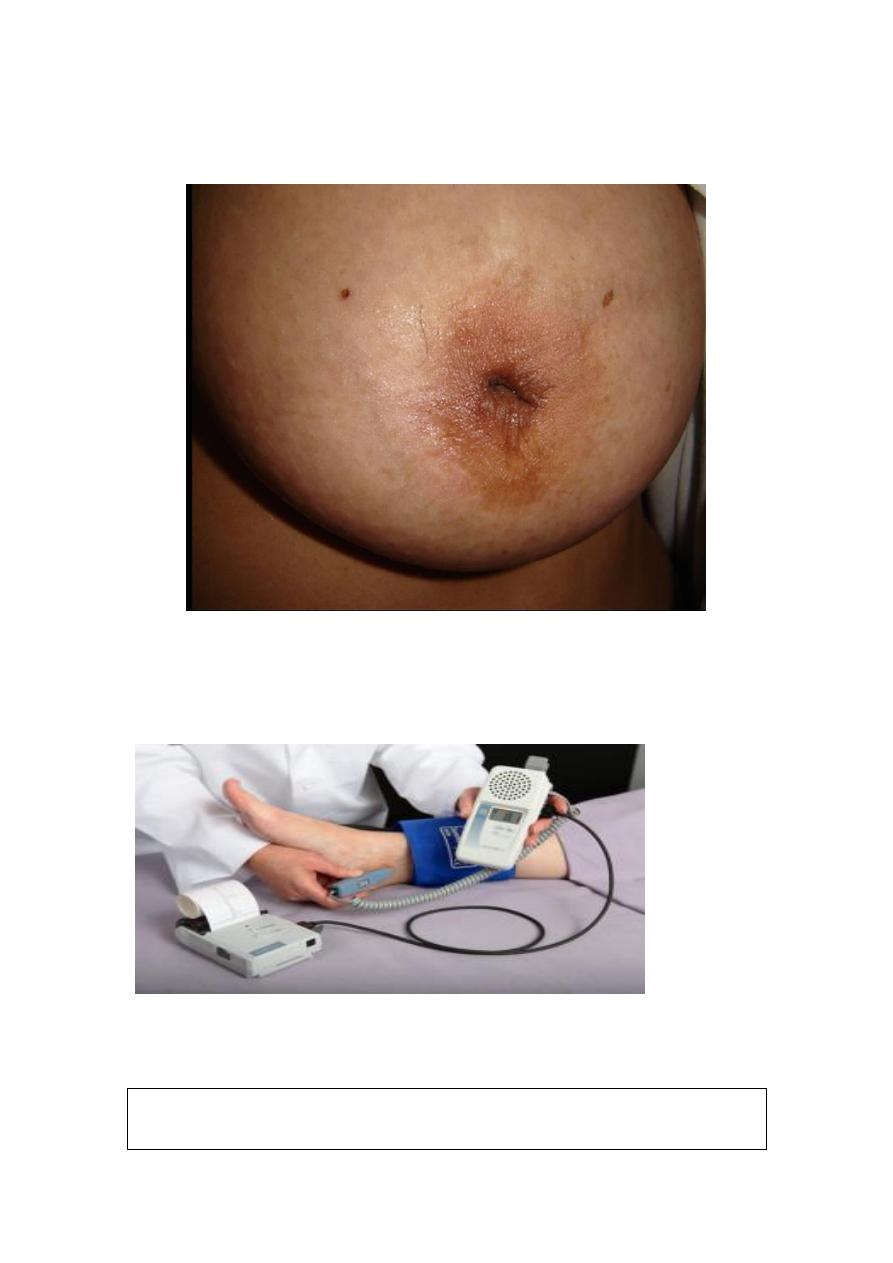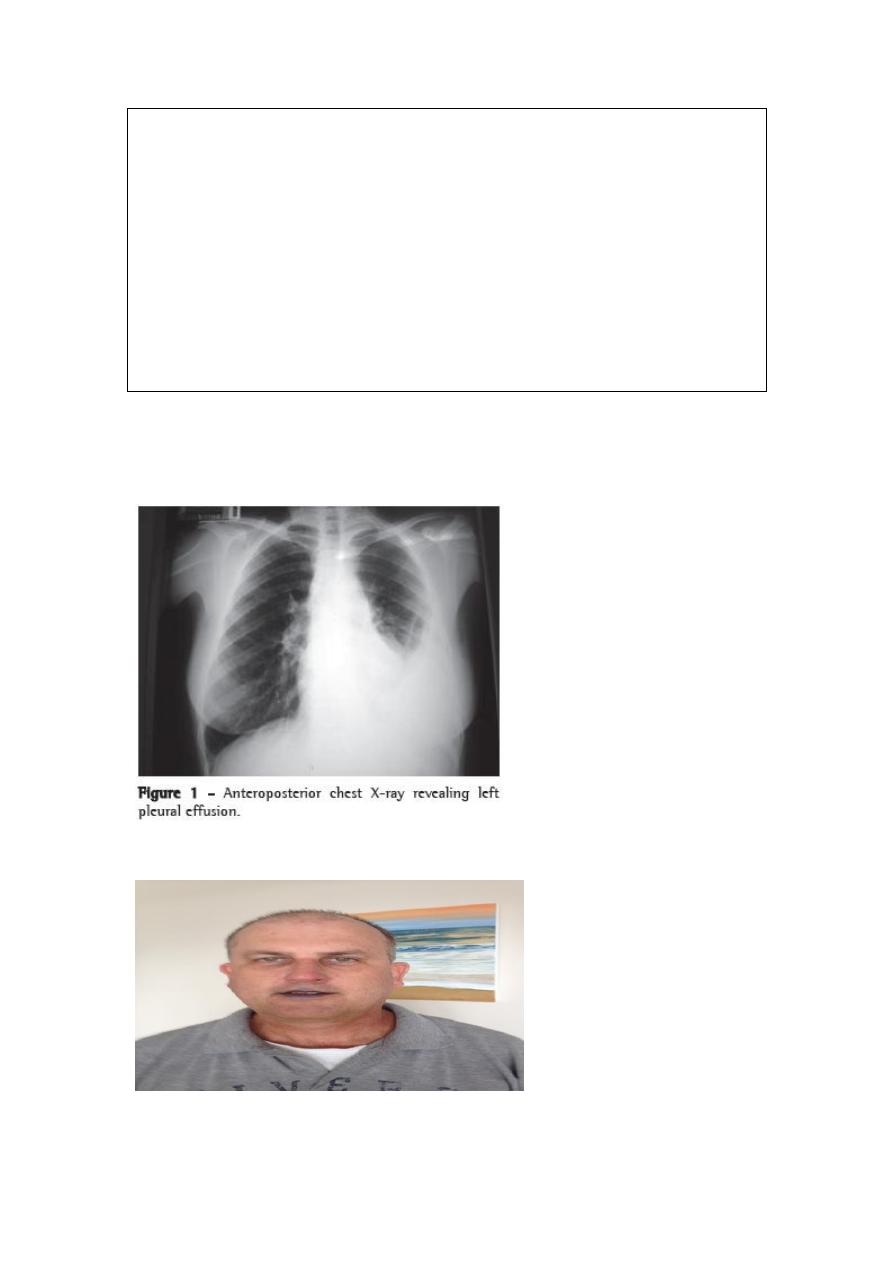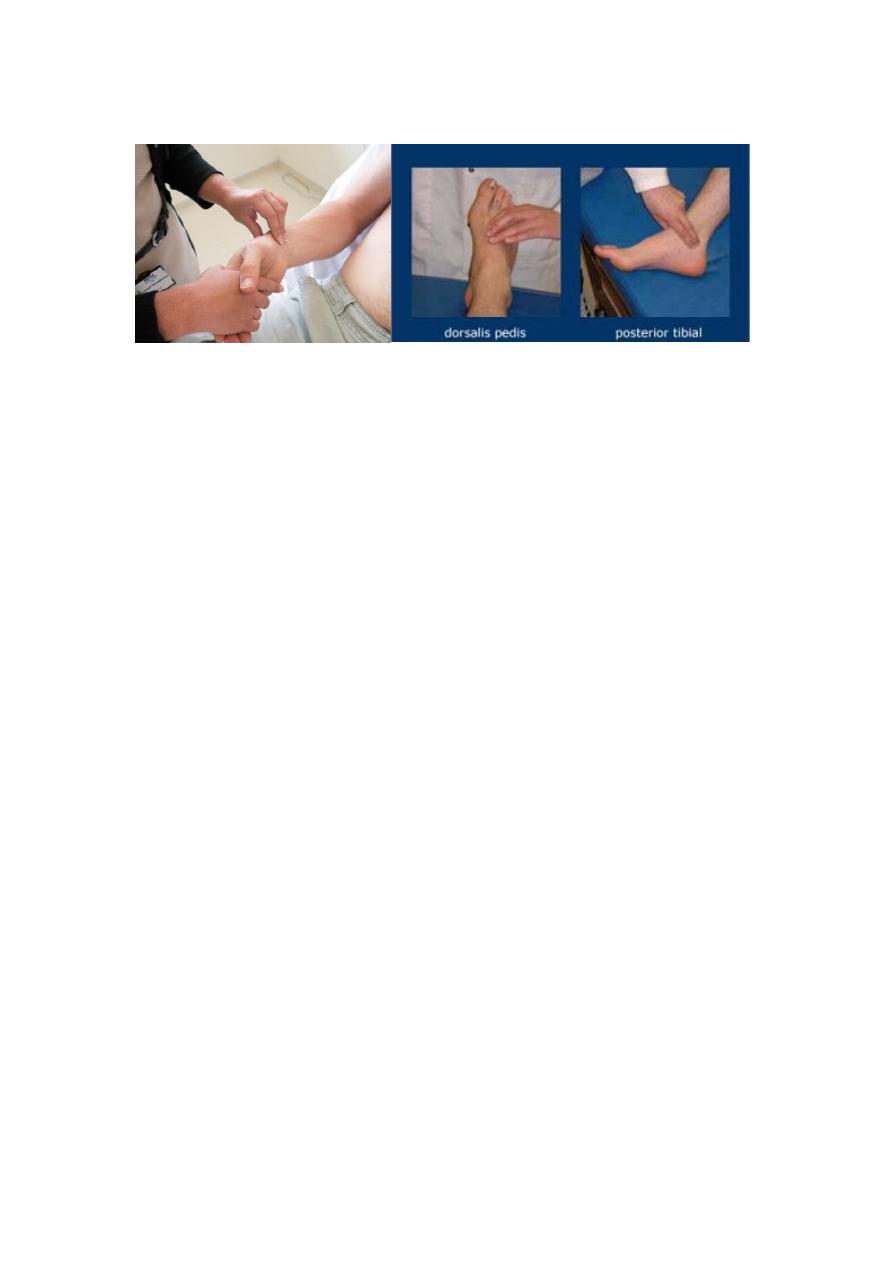
OSCE/SURGERY
chest
Q1:Dx?CAUSES.
Answer:nipple retraction
1-ductectasia 2-breast cancer 3-fat necrosis.
Q2:NAME THE instrument /what this examiner measures?
Answer:hand-held Doppler /ankle brachial index.
Use a hand-held Doppler and a
sphygmomanometer
• Hold the probe over the posterior tibial artery

• Inflate a BP cuff round the ankle
• Note the pressure when Doppler signal disappears.
This is the systolic pressure in that artery as it
passes under the cuff
Repeat holding the probe over dorsalis pedis, and
then the perforating peroneal .
• Measure the brachial BP in both arms, holding the
Doppler probe over the brachial artery at the elbow
of the radial artery at the wrist.
Normal findings The ratio of the highest pedal artery
pressure to the highest brachial artery pressure is the
ABPI. In health, the ABPI is >1.0 when the patient is
supine. The popliteal artery is always hard to feel – if
you feel it easily, consider an aneurysm.
.
Q3:dx ,findings,causes.
Name the sign in this face/explain the mechanism.Q4:CENTRAL CYANOSIS.

Q5:Name the vessel and its landmark for peripheral pulse exam.
Q6:palpation of breast.
Q7:how can you know chest tube is working? Q8:percussion for chest.
Q9:ulcer examination. Q10:SYSTEMIC REVIEW cardio-respiratory system.
